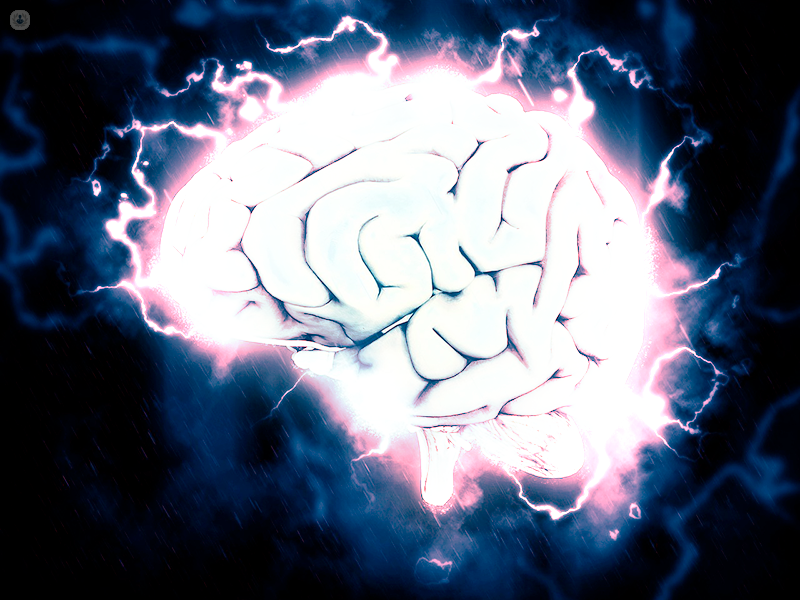How do doctors treat a brain haemorrhage?
Written by:A brain haemorrhage can be a life-threatening event. However, it can be treatable, and with the use of modern surgical techniques recovery from treatment is now faster than ever. We asked leading neurosurgeon Mr Christos Tolias about what someone’s treatment options are if they have a brain haemorrhage:

How do you know if you’ve had a brain haemorrhage?
Brain haemorrhage symptoms can include:
- Severe headache and nausea
- Sensitivity to light
- Blurred vision
- Stiff neck
A brain haemorrhage can also cause some patients to pass out or experience stroke-like symptoms including slurred speech.
A brain haemorrhage is a medical emergency. You should call for an ambulance or ask someone to take you immediately to your nearest accident and emergency (A&E) department.
What happens when I go to hospital?
If you have a brain haemorrhage the first task is to find out where the bleed has occurred and how heavy it is. This might involve having a CT scan or an MRI. Some patients may also have a lumbar puncture to check for blood in your cerebrospinal fluid.
Whatever the method of your diagnosis, it will be carried out rapidly so that treatment can be given as soon as possible.
What are the treatment options?
Treatment depends on the severity of the bleed. Some minor bleeds may just need medication to relieve headache and prevent vomiting. However, a major bleed can lead to a coma or even be fatal, so surgery is often required.
There are two types of surgery for a brain haemorrhage:
Clipping
In this procedure, the doctor “clips” the blood vessel which is leaking blood to prevent any further build-up of pressure in the brain.
First, the surgeon must gain entry to the brain by removing a small piece of bone. Then, a clip made of titanium is inserted into the brain and placed around the neck of the aneurysm. This keeps the aneurysm permanently closed and should stop any further bleeding.
Coiling
Coiling is a minimally-invasive procedure which avoids the need to gain direct access into your brain through the skull. Instead, a small catheter is inserted into a different part of the body and passed through your blood vessels until it reaches the site of the aneurysm.
A tiny coil is passed through the catheter, which seals the aneurysm shut. This prevents any further blood from going into the aneurysm.
Out of the two methods, the coiling procedure usually involves a faster recovery. However, both of these procedures involve a stay in hospital afterwards, because it is vital to keep you closely monitored. You’ll be discharged once the surgeon is confident that no further bleeding will occur and once any complications of surgery have been managed.


